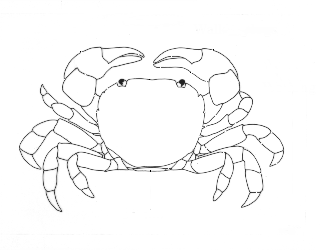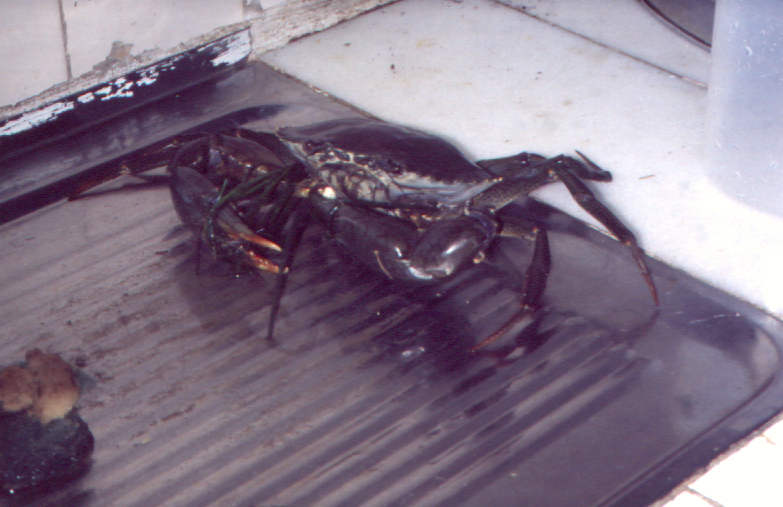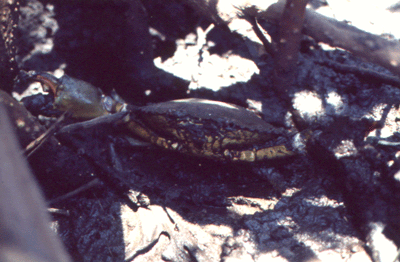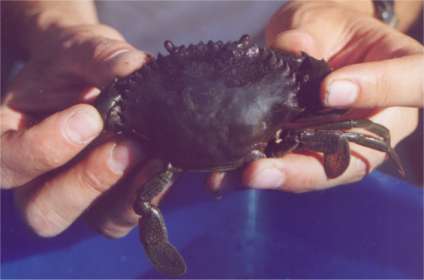
|
A field guide to Kenyan
mangroves
|
|
Scylla serrata (Forskål, 1775)
Family: Portunidae

Zone: Generally found burrowing close to large and small creeks, although may be found more than 75 m from a creek (Gillikin, 2000)..
Habitat: Burrowing up to 5 meters depth, rarely seen away from its burrow (Macnae, 1968).
Food: Carnivourous.
Ecological notes: A cryptic species with is occasionally found foraging on nocturnal incoming tides.
Distinguishing characteristics: Size (carapace width up to 20 cm), swimming legs and rounded carapace with 9 antero-lateral teeth (compare with T. crenata).

Geographical range: Throughout the Indo-west-Pacific extending southwards to the vicinity of Mossel Bay in South Africa and to Port Jackson in Australia; also Japan, China and several groups of Pacific Islands (Macnae, 1968).
References:
Cannicci, S., F. Dahdouh-Guebas and L. Montemagno, 1993. "Field Keys for Kenyan Mangrove Crabs." Museo Zoologico "La Specola", Dipartimento di Biologia Animale e Genetica dell'UniversitÓ Degli Studi di Firenze, Via Romana 17, I-50125 Firenze, Italia.
Chen, Jiann-Chu and Peng-Gek Chia, 1997. "Osmotic and ionic concentrations of Scylla serrata (Forskaal) subjected to different salinity levels." Comparative Biochemistry and Physiology, A 117A (2): 239-244.
Chen, Jiann-Chu and Peng-Gek Chia, 1997. "Oxyhemocyanin, protein, osmolality and electrolyte levels in the hemolymph of Scylla serrata in relation to size and molt cycle." Journal of Experimental Marine Biology And Ecology 217 (1): 93-105.
Gillikin, D.P., 2000. Factors controlling the distribution of Kenyan brachyuran mangrove crabs: Salinity tolerance and ecophysiology of two Kenyan Neosarmatium species. M.Sc. Thesis, Free University of Brussels, Brussels, Belgium.
Gopurenko, D., J.M. Hughes and C.P. Keenan, 1999. Mitochondrial DNA evidence for rapid colonisation of the Indo-West Pacific by the mudcrab Scylla serrata. Marine Biology 134: 227-233.
Macnae, W., 1968. A General Account of the Fauna and Flora of Mangrove Swamps ad Forests in the Indo-West-Pacific Region. Advanced Marine Biology 6:73-270.
